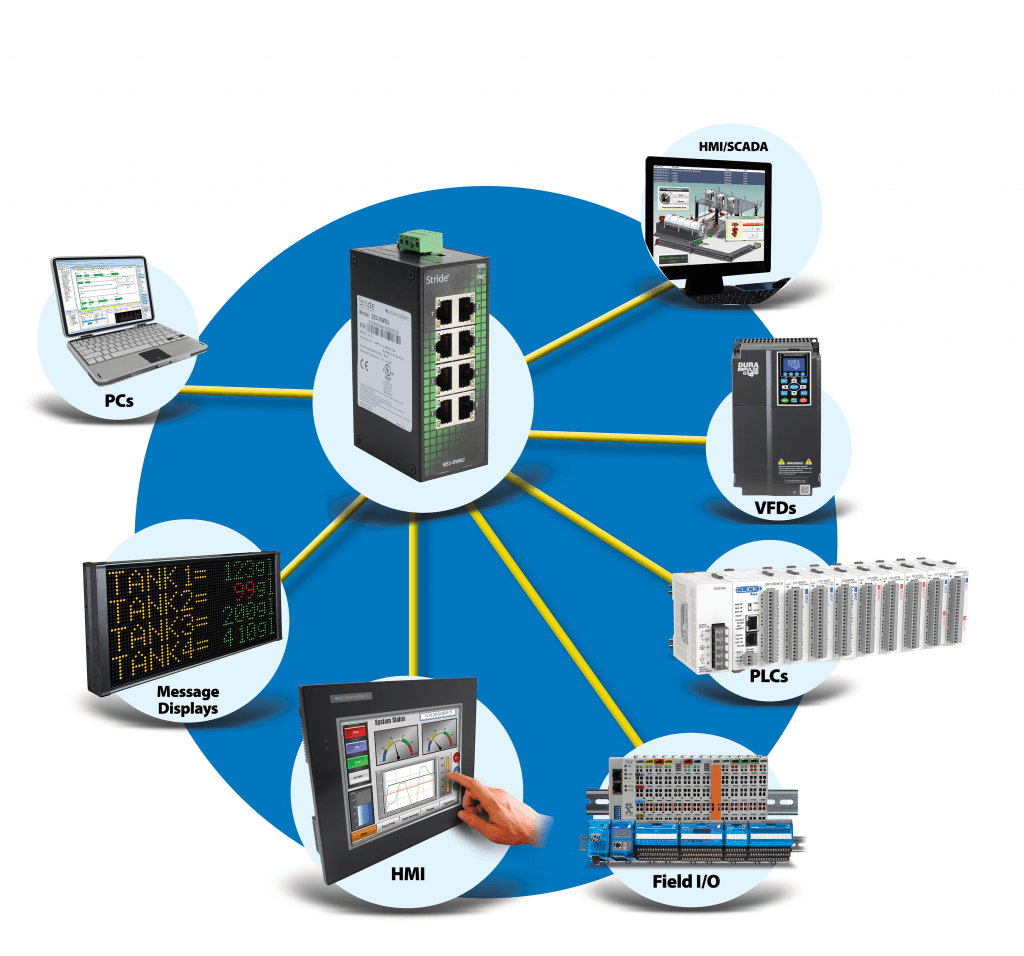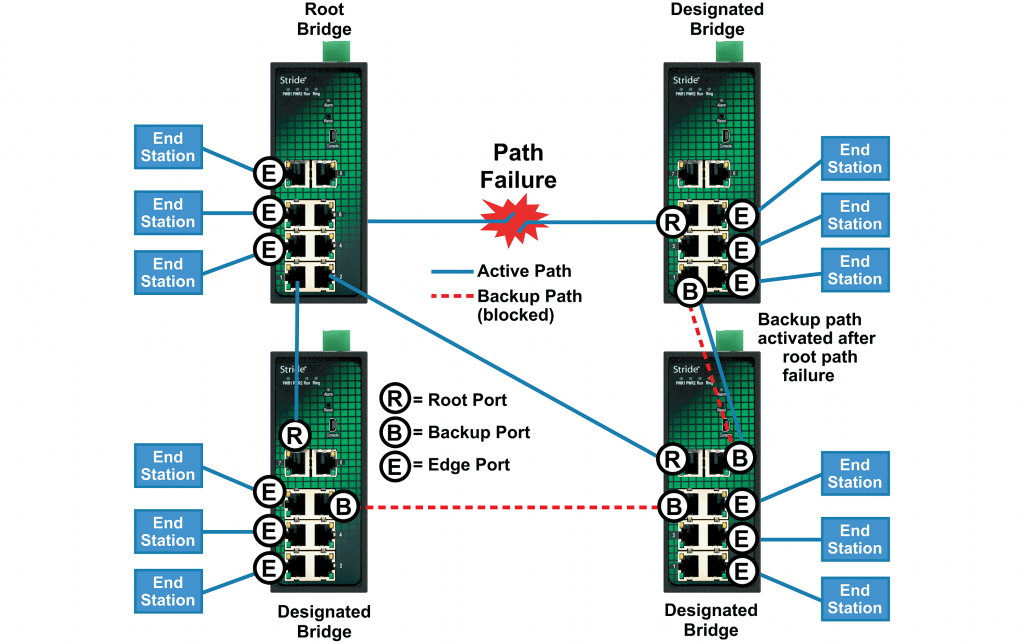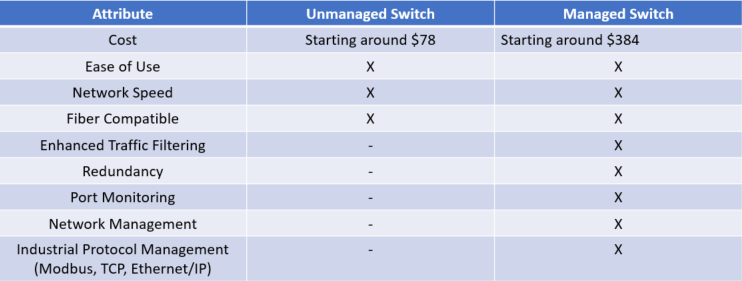Unmanaged switches may be able to do the job in some applications, but managed switches deliver improved performance and cybersecurity.
Bill Dehner, technical marketing engineer for AutomationDirect, wrote an article for the February 2020 issue of Applied Automation titled How to Choose Between Managed and Unmanaged Switches. Here’s a summary, click on the link above for the full text.
Managed vs Unmanaged Switches?
People everywhere are spoiled by fast and reliable consumer-grade Ethernet connectivity, in both wired and Wi-Fi versions. But can basic networking devices be used directly for industrial applications? This article examines why industrial-grade devices should be used for automation network, and specifically how to choose between managed or unmanaged switches for the task.
Beyond Commercial-Grade

Typical consumer-grade network devices are certainly good enough for using with portable devices and computers for general tasks and entertainment, where brief interruptions are just a nuisance. But industrial systems must constantly process and communicate time-sensitive data and I/O signals to avoid equipment damage, wasted product, data loss, and personnel safety concerns.
Commercial-grade network devices may offer high reliability in benign settings, like an office, but they are not specifically designed to resist environmental extremes of temperature, vibration, and electrical noise found at industrial locations.
Fortunately, economies of scale have brought prices down for true industrial-grade networking devices, so there is little reason not to choose industrial switches for automation projects. But operations technology (OT) personnel may not be comfortable with information technology (IT) topics as they choose between basic plug-and-play unmanaged or more capable managed switches.
Unmanaged Option
For a typical OEM using a PLC and HMI to automate a standalone machine, a small unmanaged switch is a functional fit and has a starting price under $100. Ease-of-use and sufficient speed make unmanaged switches the best choice for small projects.
Stepping Up to Managed
As Ethernet-connected device counts go higher, or when many pieces of equipment will interoperate on the same facility local area network (LAN), the balance shifts toward using a managed switch. Managed switches become mandatory as the following requirements are added:
- Enhanced traffic filtering
- Network redundancy
- Comprehensive security
- Deeper troubleshooting and diagnostic information
- Overall better network “awareness” for users and automation platforms

To minimize delays, managed switches move beyond the basic packet filtering found in unmanaged switches, adding multicast filtering, virtual LANs (VLANs), and quality of service (QoS) features to manage traffic.
Network redundancy, using rapid spanning tree protocol (RSTP) or other ring protocols, are only available with managed switches. Using these devices and some extra cable runs, any network with more than a few switches will experience greater resilience.
Finally, managed switches include the following features to provide better security, diagnostics, and user awareness:
- Port control
- Secure configuration
- Port monitoring
- Network statistics and information
- Simple network management protocol (SNMP)
- Alarm outputs

Making the Move to Managed Switches
Many basic projects can get by with unmanaged switches. However, managed switches have become easier to use, so OT personnel can typically configure and manage them without needing IT involvement.
For many applications designers should consider the immediate and future benefits of managed switches and specify them for situations where they would previously have used unmanaged switches. For most any type of industrial automation project, users are likely to find the somewhat higher cost premium for a managed switch will yield significant benefits for operating, securing, and maintaining an automation system.

